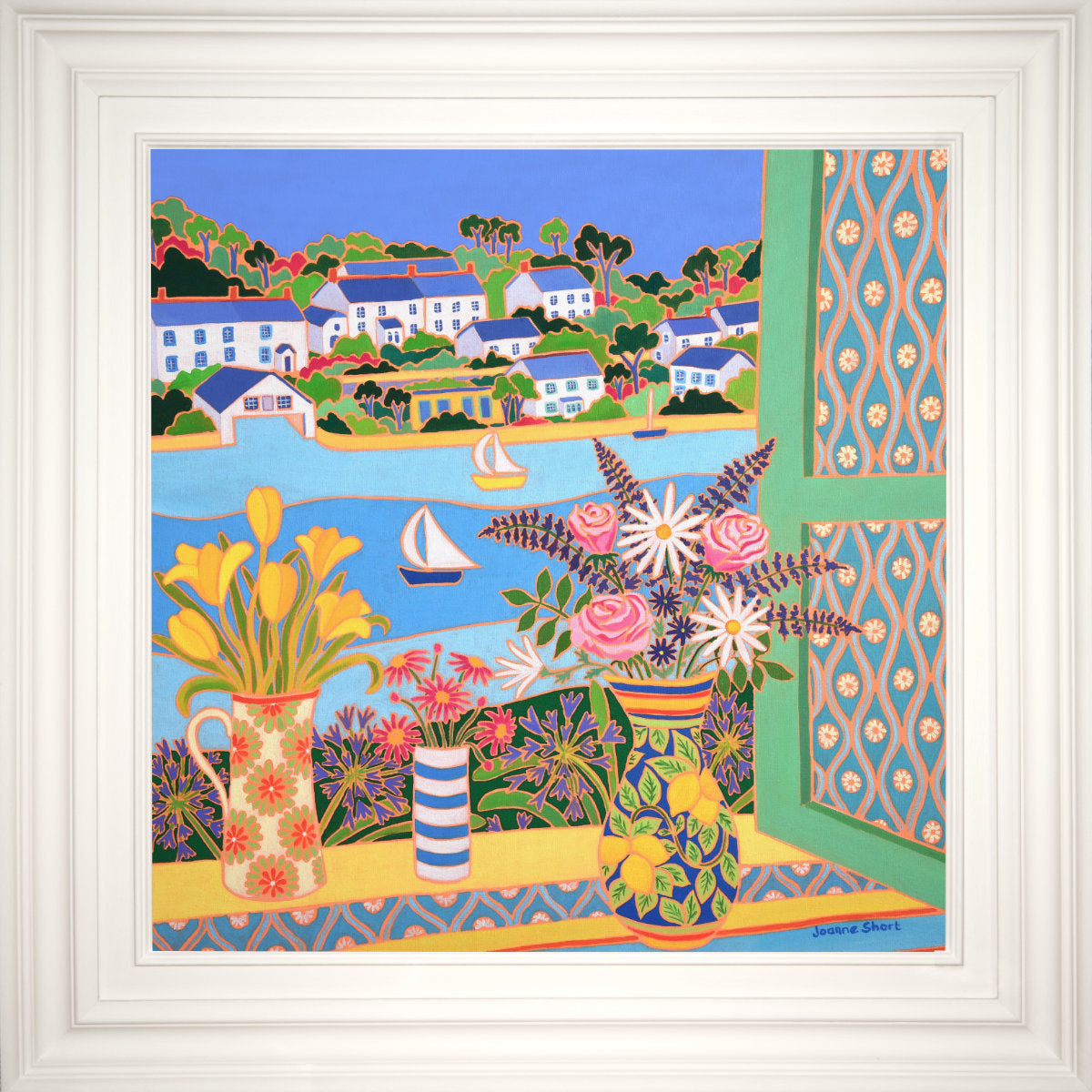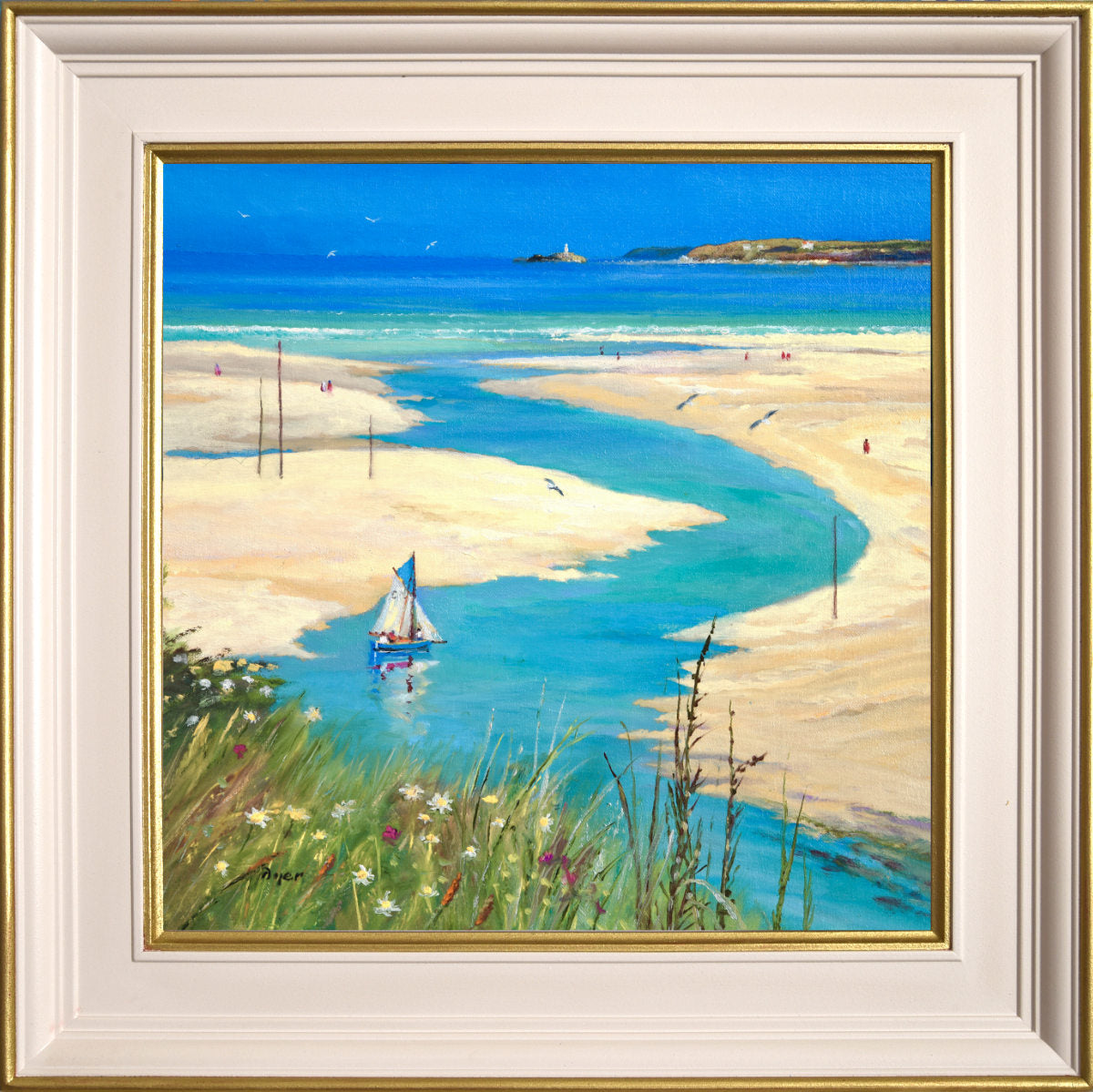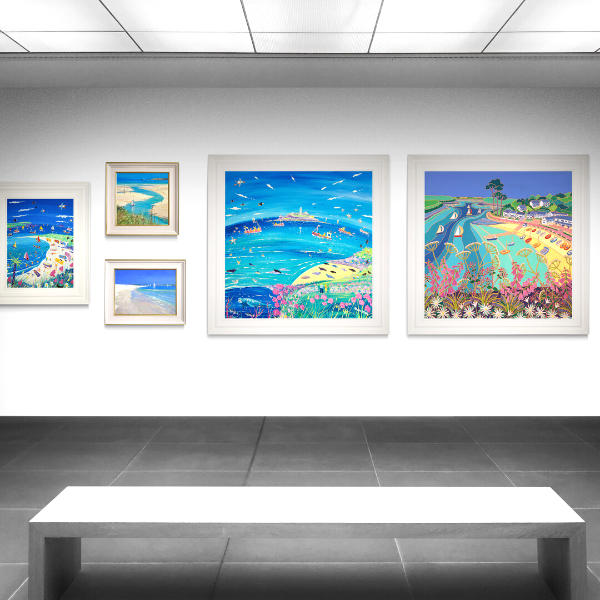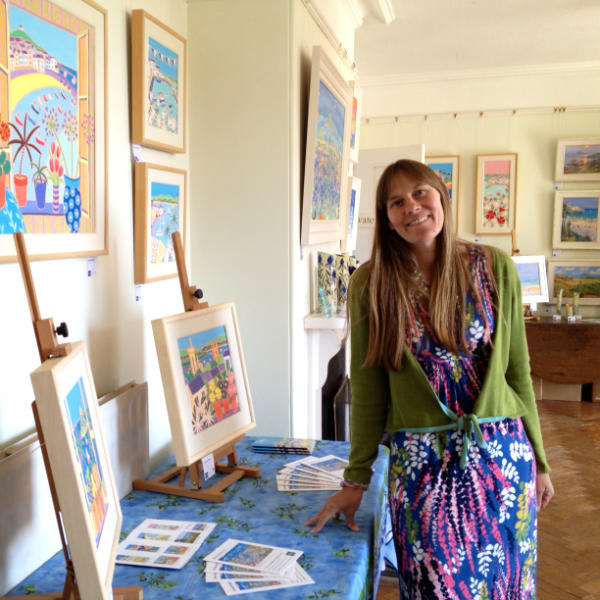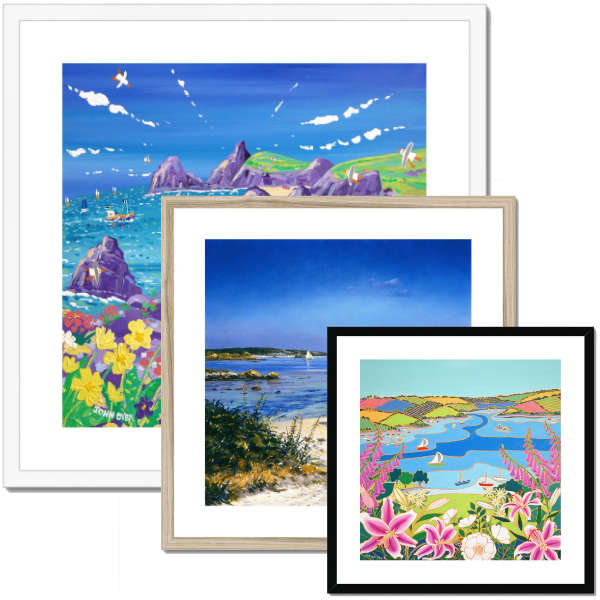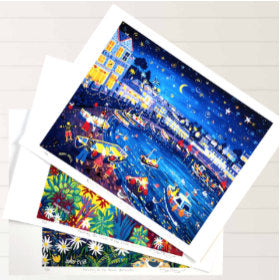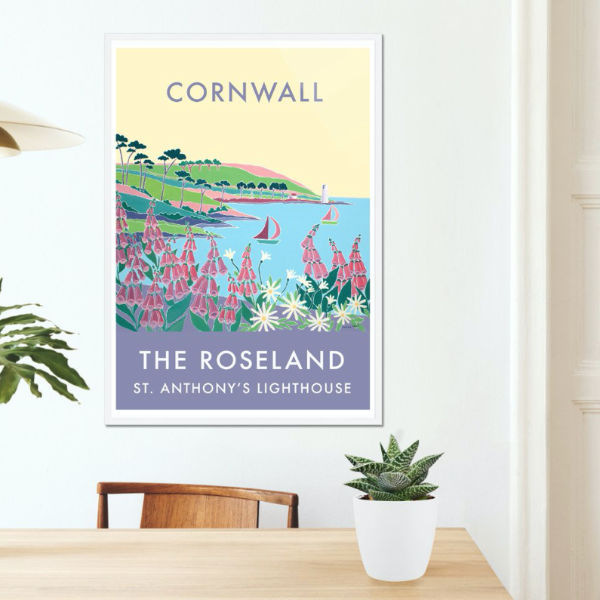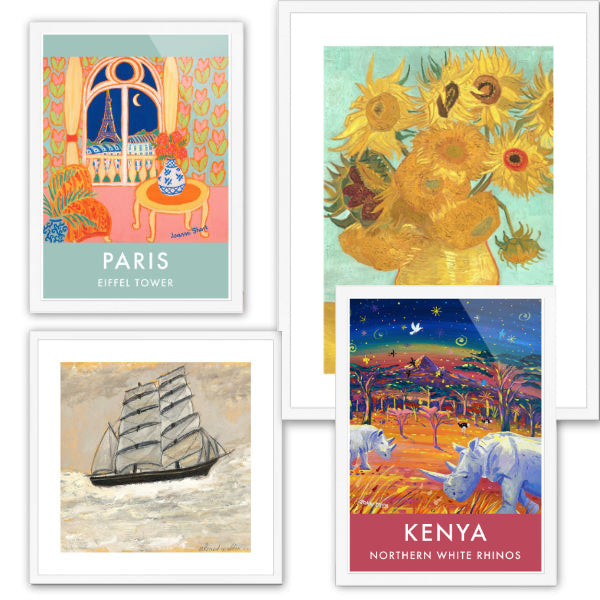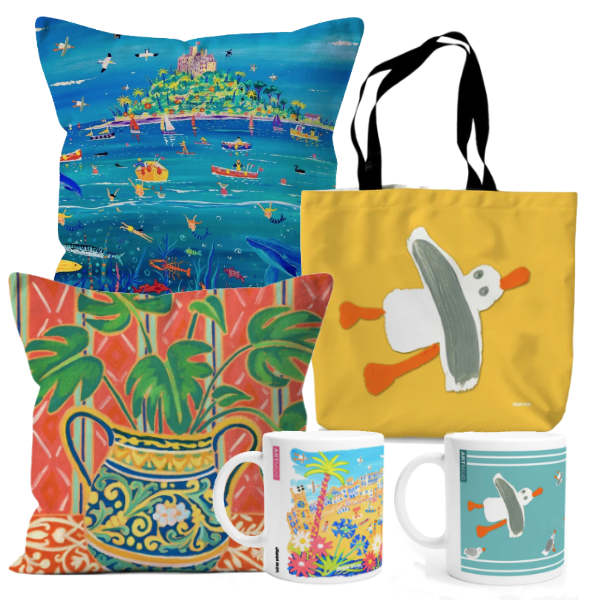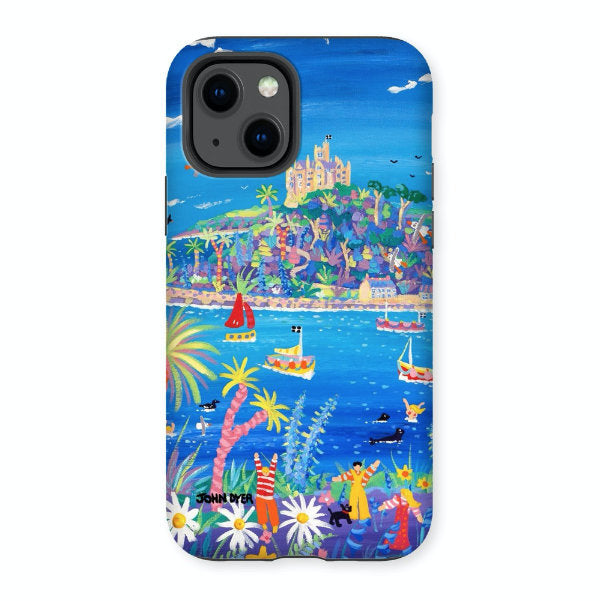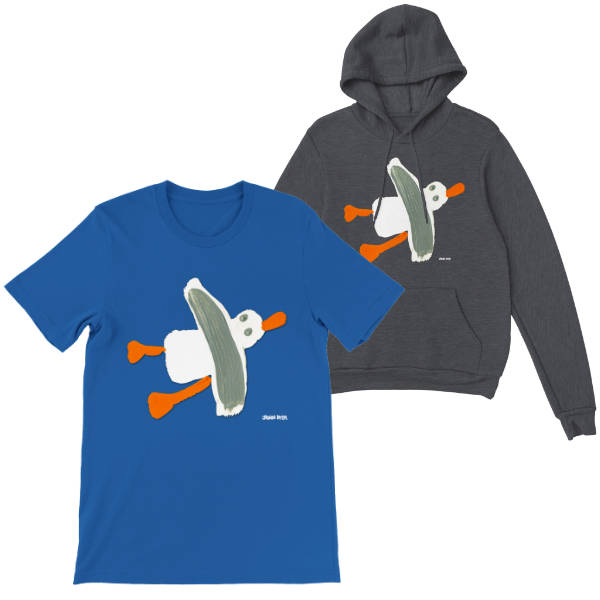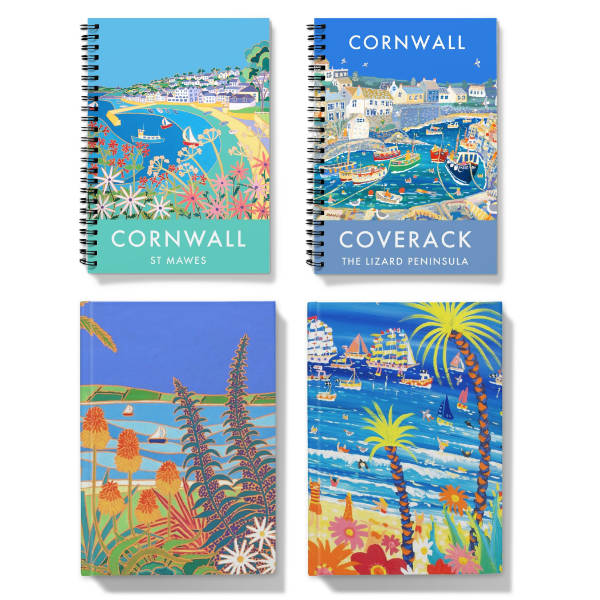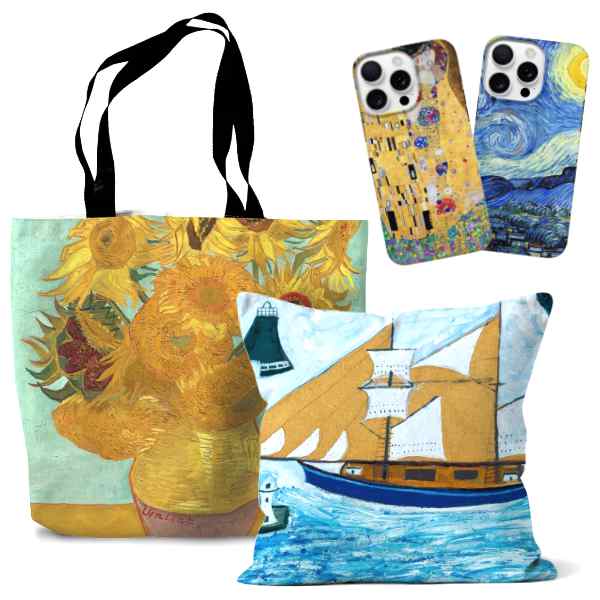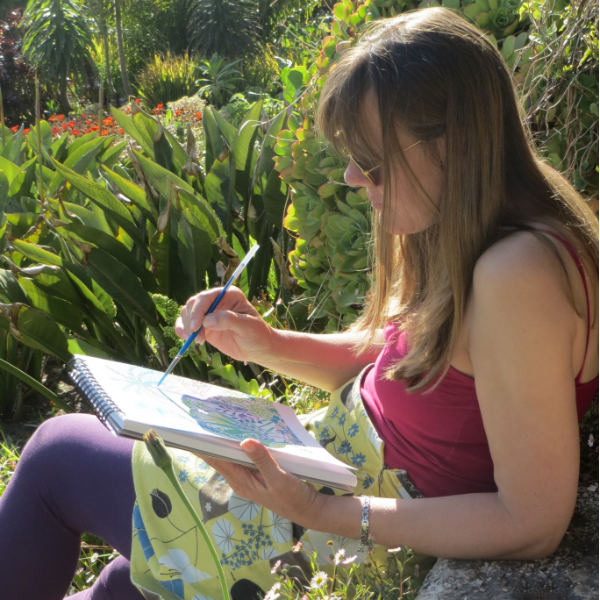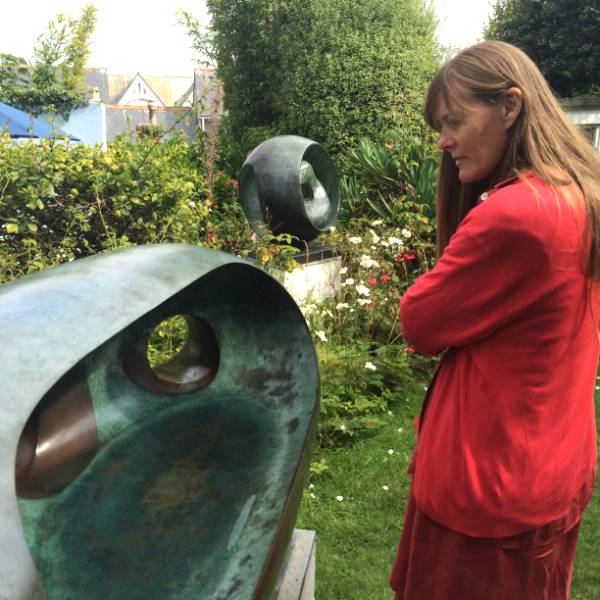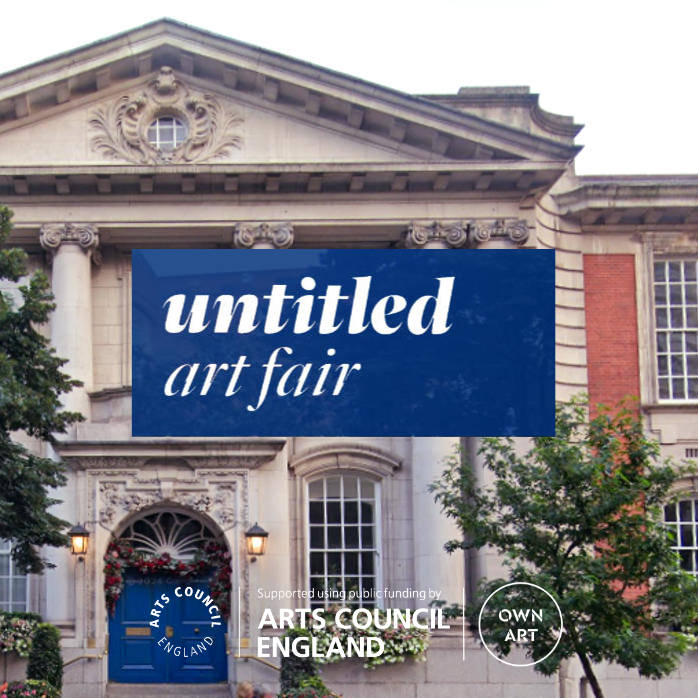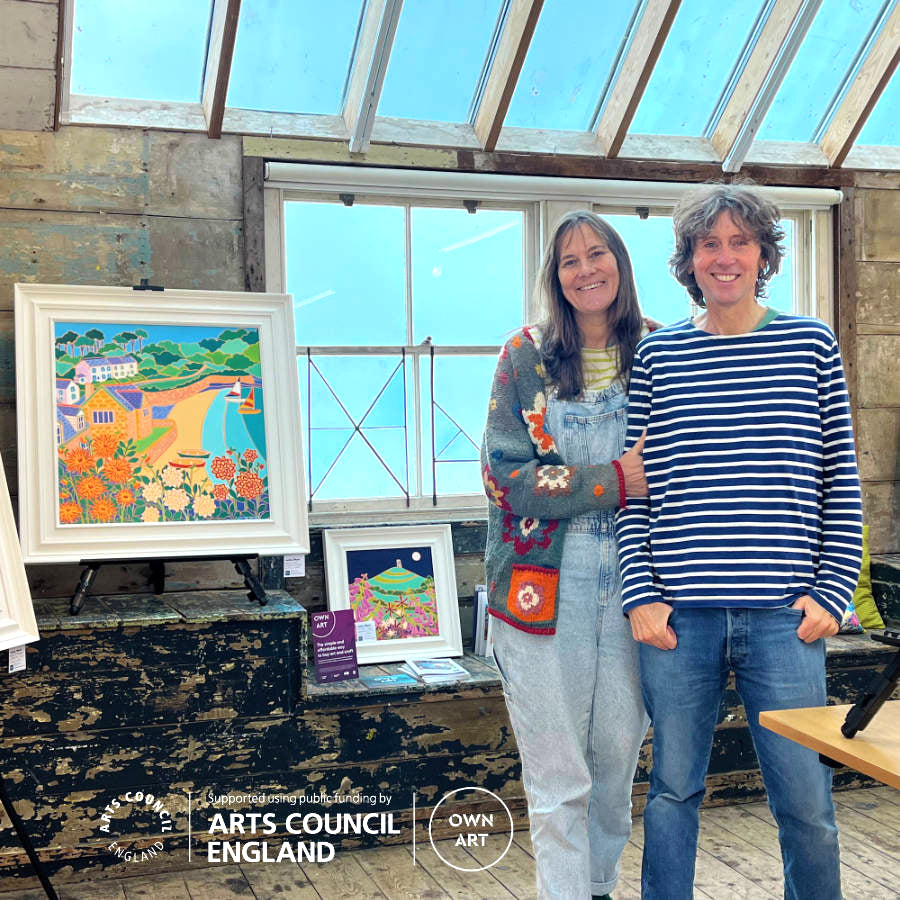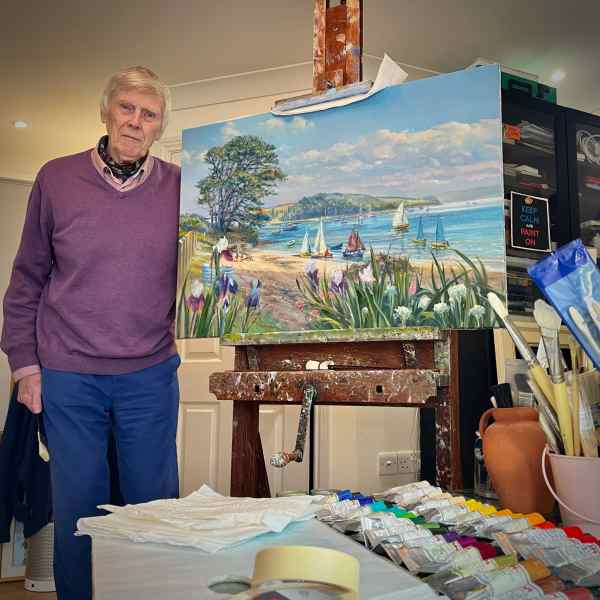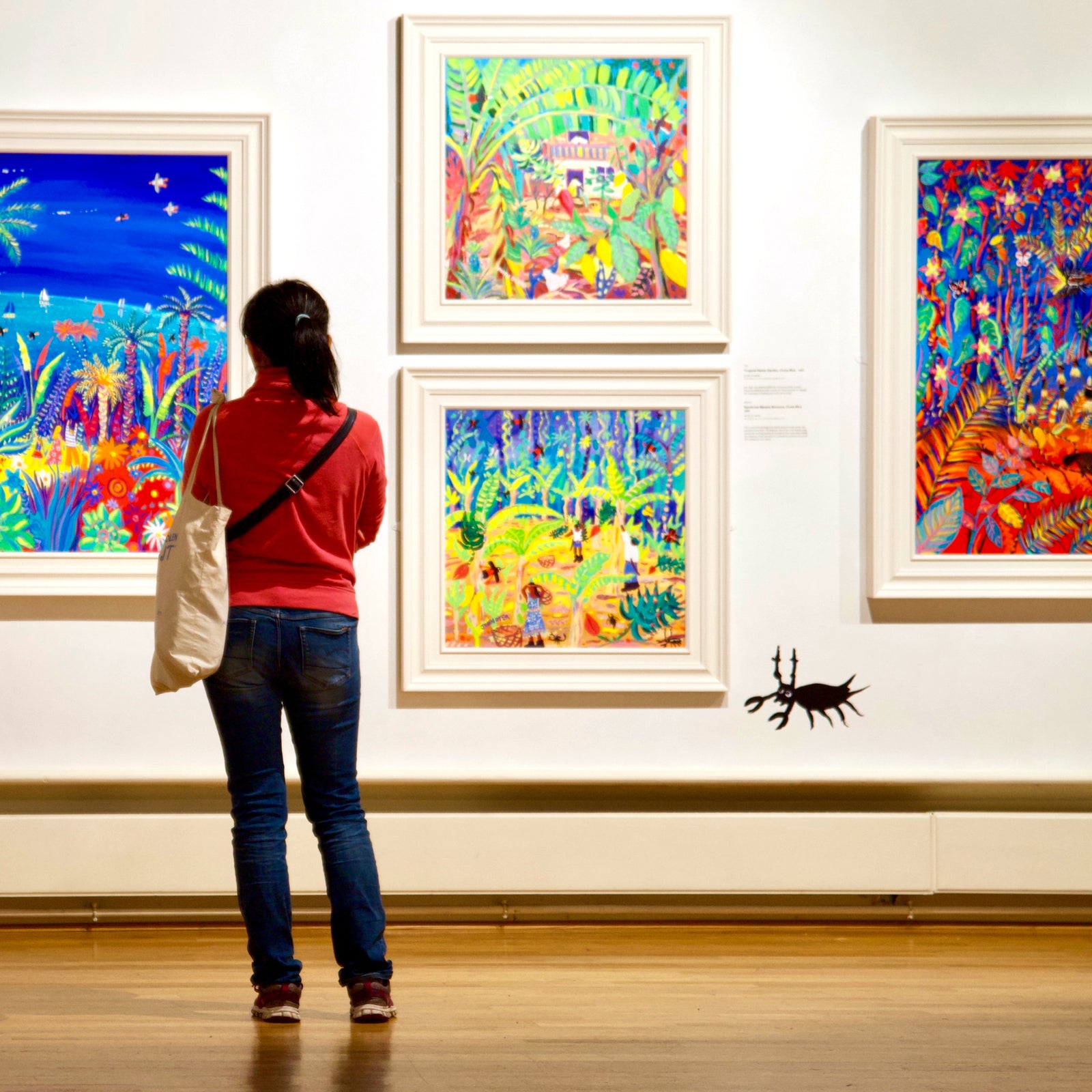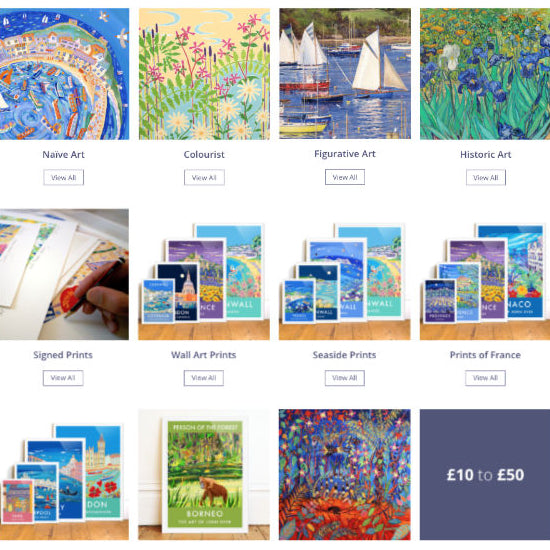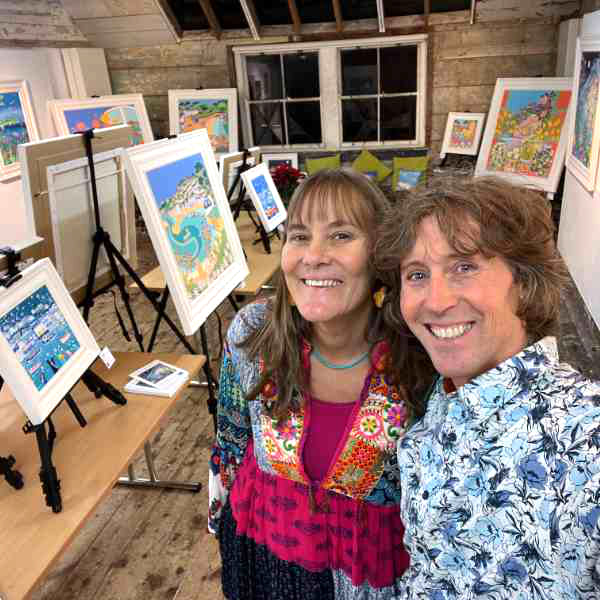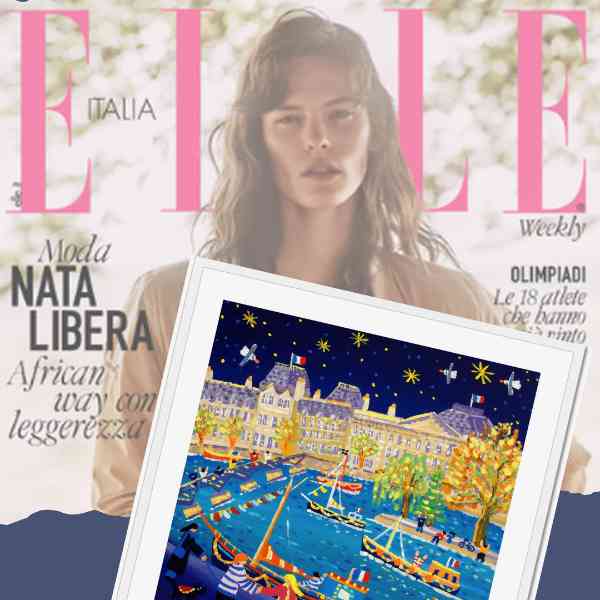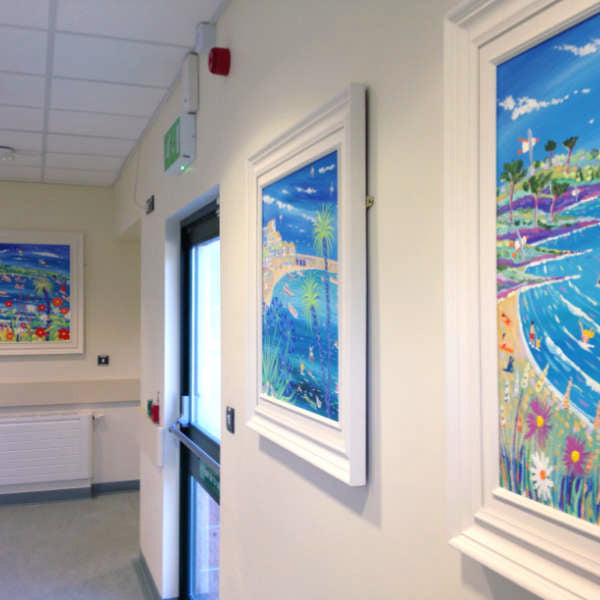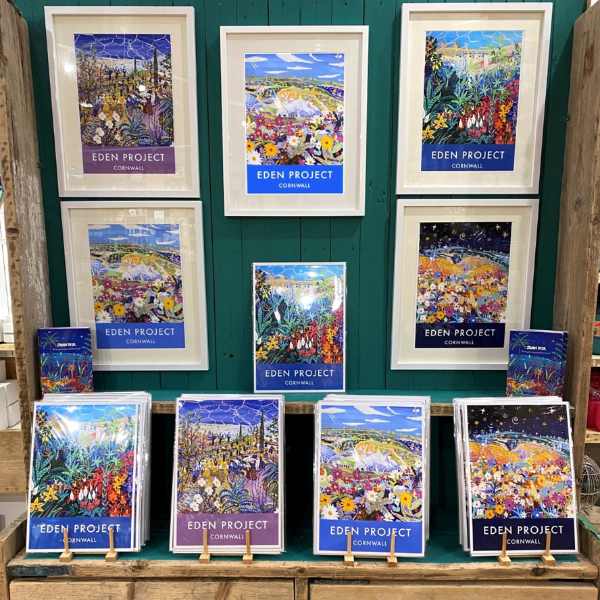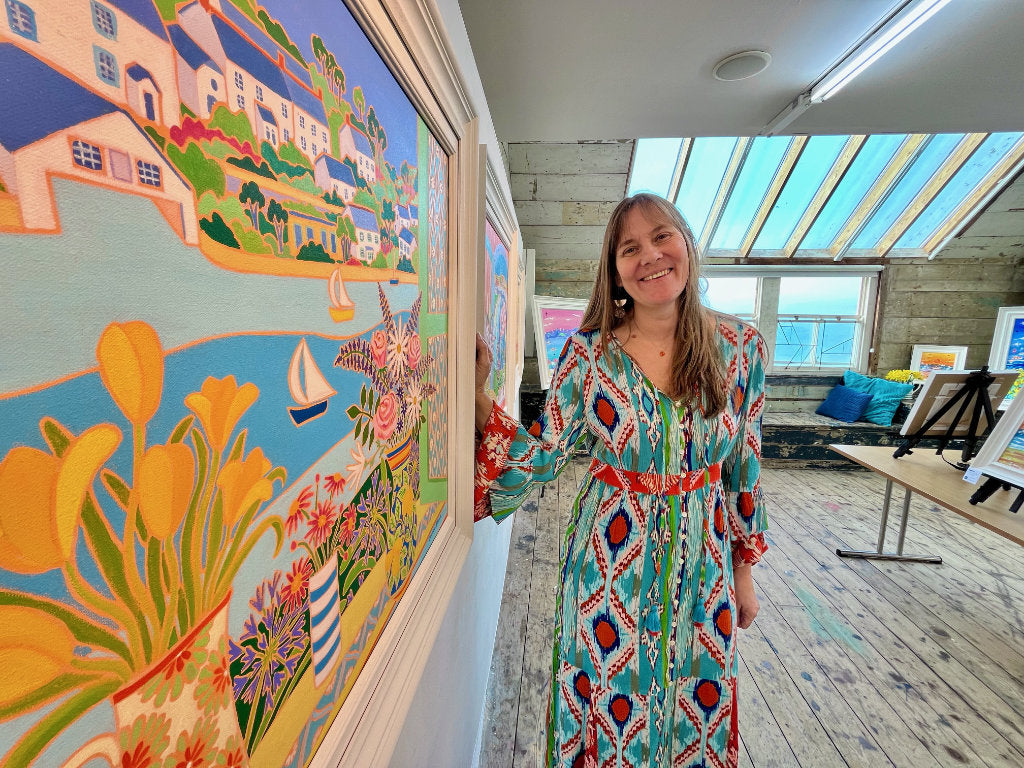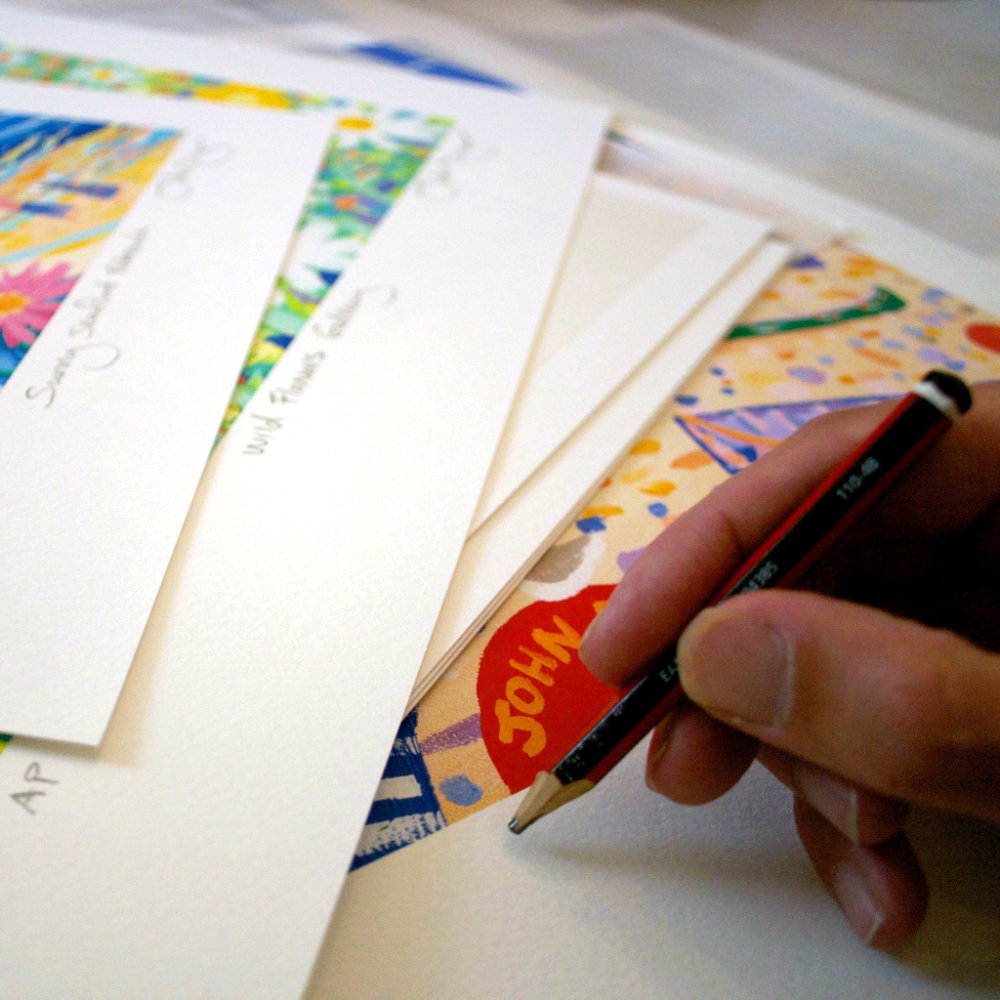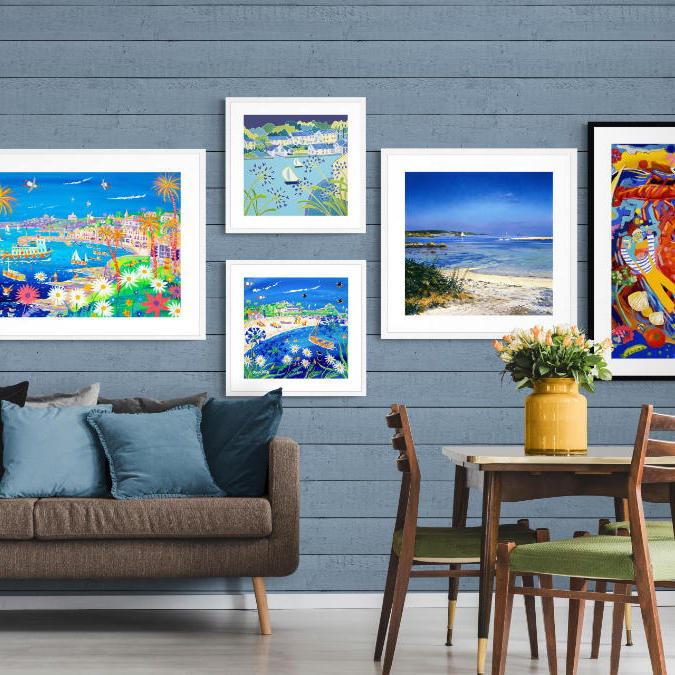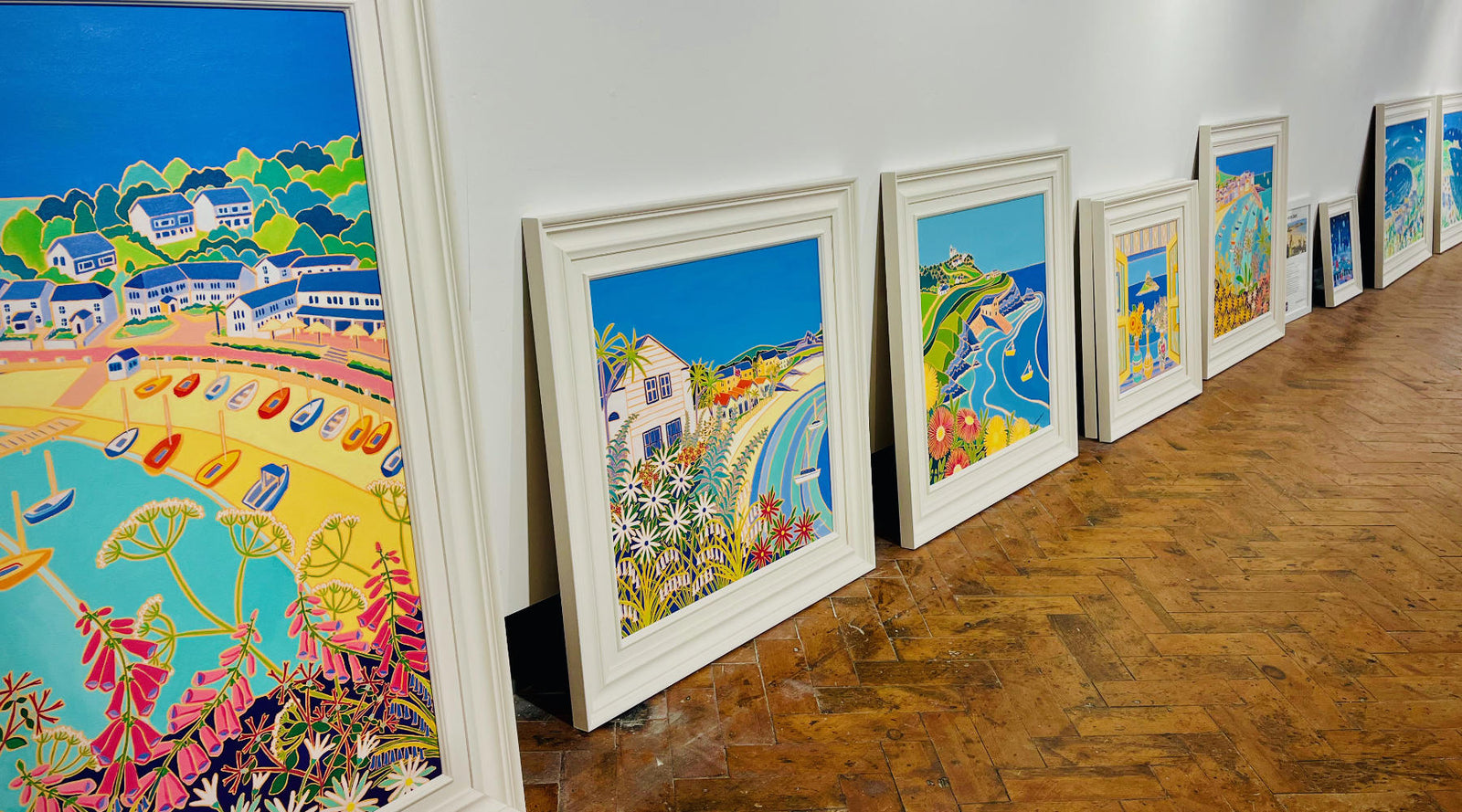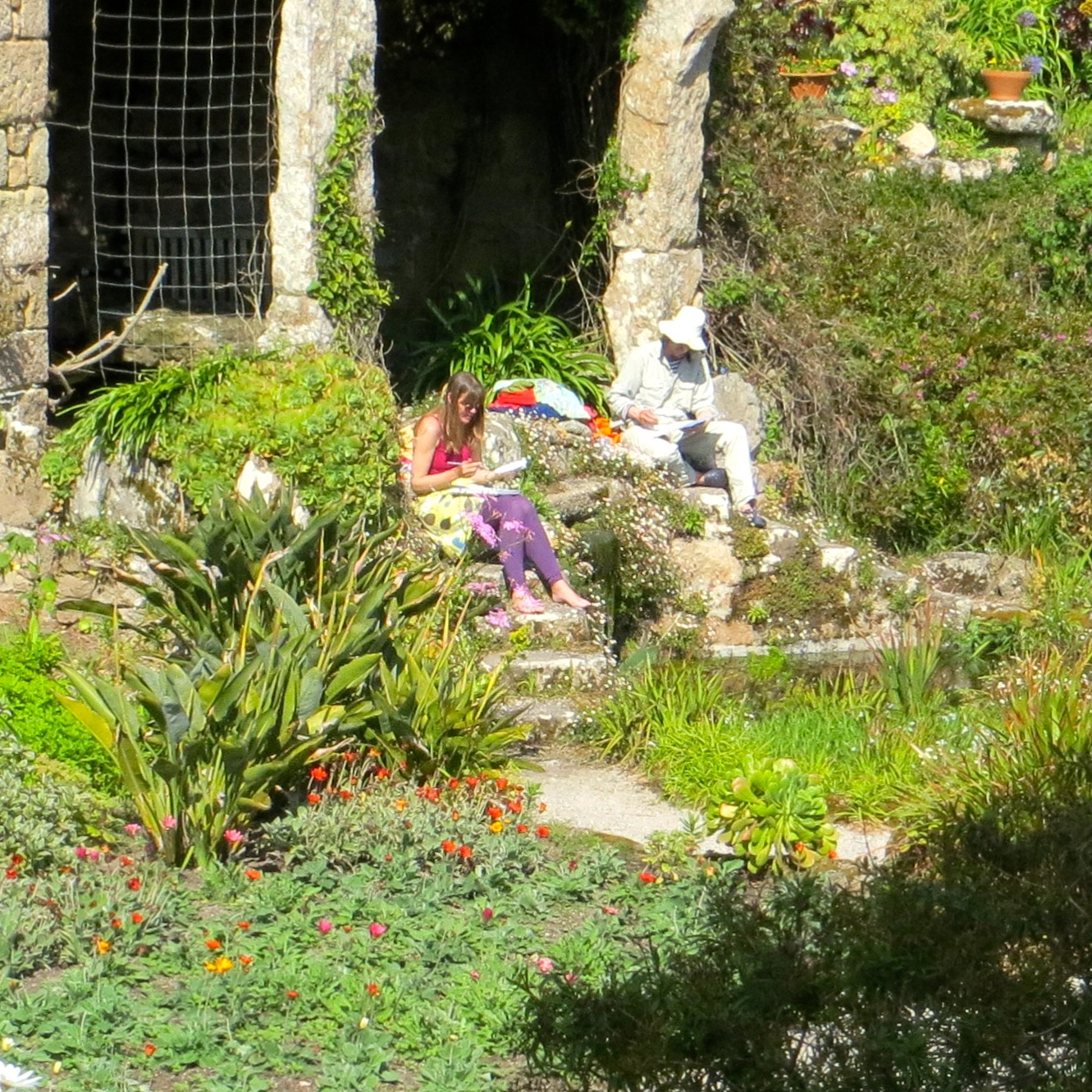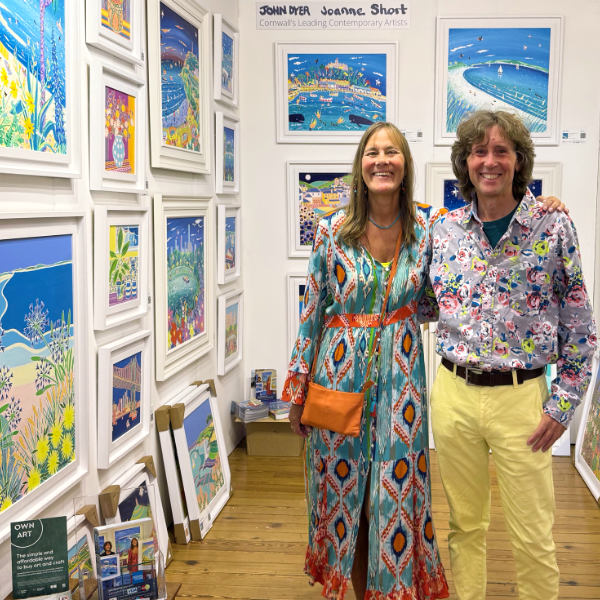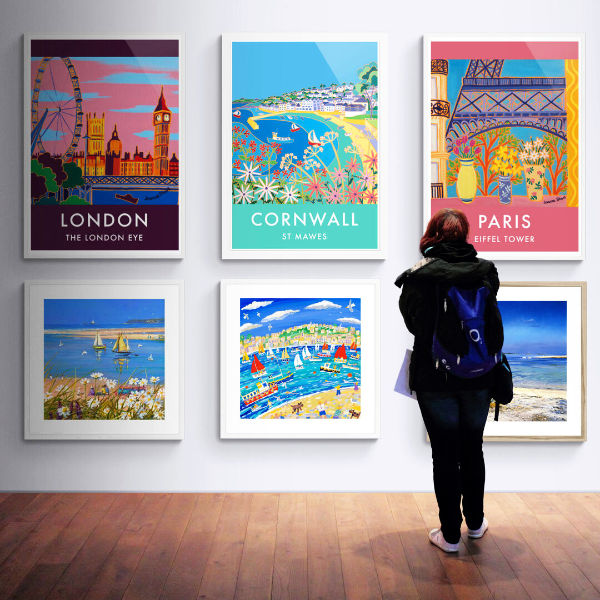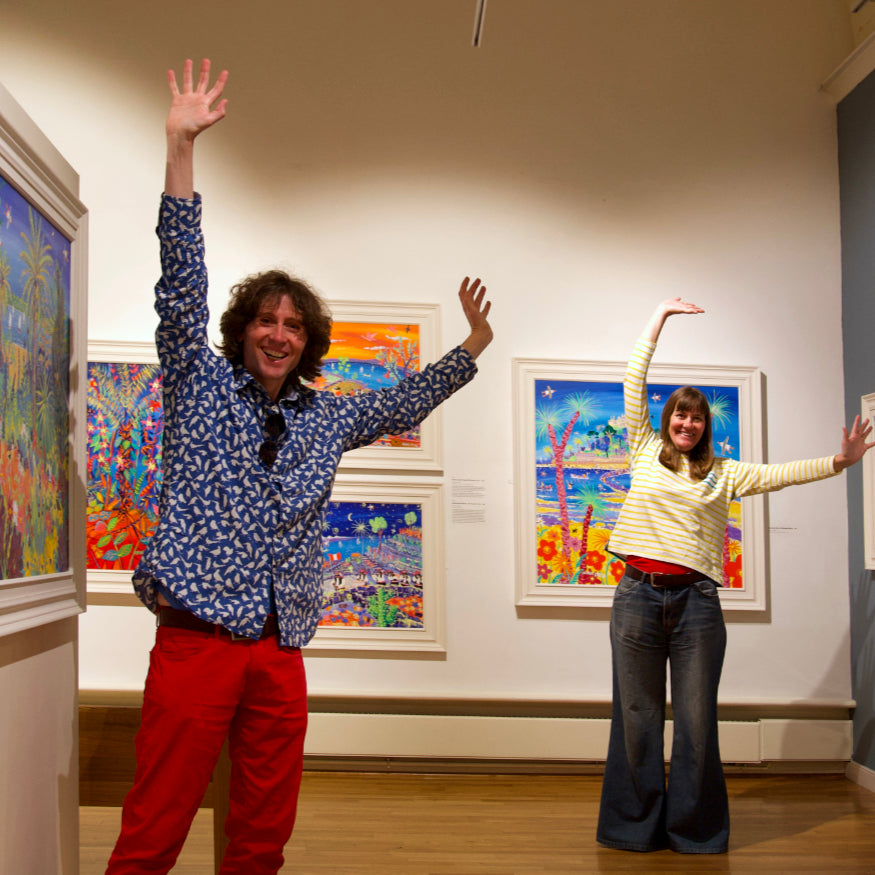
The world of art collecting might seem intimidating at first glance, reserved for those with deep pockets and insider knowledge. But don't be put off: art collecting is a comprehensive process that anyone can dive into by following various steps. Start by educating yourself about different art movements and styles — this doesn't mean getting a degree in art history, just spending time looking at what resonates with you. Trust your instinct and define your personal interests; as many collectors will tell you, "Buy something for the simple reason that you love looking at it." Setting a budget is crucial too — whether it's £50 or £5,000, knowing your limits helps narrow down choices in this vast market. It's perfectly fine to start small with affordable prints or works by emerging artists (keeping an eye on recent art school graduates can be a savvy move!). Remember that an art collector isn't just someone who buys pretty things; they're actively curating artworks, sometimes unknowingly shaping cultural trends and providing vital support to artists who might otherwise struggle to make a living. This little guide aims to help you understand the collector's role, kick-start your own collection journey, learn where to source interesting pieces, invest your money wisely, and maintain your collection properly over time — because looking after art isn't just about hanging it on a wall and forgetting about it!
Key Takeaways
-
Art collectors play a crucial role in shaping cultural landscapes and influencing market dynamics, with a focus on both aesthetics and investment potential.
-
Starting a collection involves understanding personal preferences, exploring various art movements, and utilising diverse sourcing avenues such as online marketplaces, galleries, and auctions.
-
Key factors in art collecting include artist reputation, provenance, and artwork condition, all of which significantly impact both value and desirability.
Understanding the Role of an Art Collector
Above: Art collector viewing painting by John Dyer 'Sun Dried Faces'
Art collectors play a pivotal role in shaping cultural landscapes and influencing market dynamics. By investing in art, collectors not only support individual artists but also contribute significantly to the overall cultural conversation and artistic landscape. They help make art accessible to a broader audience, ensuring that diverse groups can engage with and appreciate artistic works.
Art collectors play a pivotal role in shaping the cultural landscape, significantly influencing which art forms gain recognition and impacting artists’ careers. Historically, collectors have been crucial in supporting artists, enabling them to create groundbreaking works that define entire art movements. Their decisions can sway market dynamics and the financial viability of artists and art genres.
Contemporary art collectors often use their collections to promote specific styles or messages, thereby influencing public taste. Strategic choices by collectors drive interest and demand within the art market, increasing artists’ visibility. This not only enhances the cultural significance of the artworks but also contributes to the economic sustainability of the art industry.
Being aware of the historical context allows collectors to appreciate how societal changes impact artistic expression. Knowledge of historical art movements enhances appreciation of artistic evolution and its influence on current trends.
Beyond the market, collectors frequently prioritise aesthetics over investment potential when selecting artworks - this will often result in a trend if the collector is influential.
Steps to Start Your Art
 Above: Gallery style hanging of a private art collection of original paintings from The John Dyer Gallery
Above: Gallery style hanging of a private art collection of original paintings from The John Dyer Gallery
Starting an art collection can be an exciting and rewarding endeavor. Whether you are drawn to contemporary pieces or classic works, there are a few key steps to consider when beginning your collection.
Major institutions like the Royal Academy of Arts sell editioned works, which can be prestigious options for new collectors.
First, determine your budget and the type of art that interests you. This will help narrow down your options and make the process more manageable.
Starting your art collection begins with trusting your instincts and selecting pieces you genuinely enjoy. Art preferences can evolve over time, and it’s perfectly okay to change your mind about pieces. Familiarising yourself with different art styles, like Impressionism or Abstract, can help pinpoint what you appreciate in art.
Exploring various art movements, from the Renaissance to Modernism, each reflecting the societal and political contexts of their time, will enrich your understanding and appreciation. Consider starting with an editioned print or work on paper, which can be a more accessible entry point for new collectors.
When purchasing artwork, think about the artist’s medium and the nature of the work. Auctions can be a strategic way to acquire rare and unique pieces that may not be available elsewhere. Experimenting with the placement of artwork in your space can also enhance its impact.
Where to Source Art for Your Collection
As an art collector, there are multiple avenues to source artwork, each offering unique benefits. Here are some options to consider:
-
Online marketplaces - These have gained popularity due to their convenience and the variety of artwork available for purchase.
-
Art fairs and commercial galleries - Attending these events allows collectors to discover new artists and gain exposure to diverse artworks.
-
Auctions - These provide opportunities to acquire unique and rare pieces that may not be available elsewhere, often at competitive prices.
By exploring these avenues, you can enhance your art collection and discover new pieces that resonate with you in the vibrant world of arts.
Each of these sources caters to different collector preferences. Online platforms like Artsy offer a user-friendly experience, while art fairs and galleries provide a tangible connection to the art. Auctions add an element of excitement and competition, often leading to the acquisition of truly exceptional pieces.
Online Marketplaces
Online marketplaces have become significant venues for art collectors to acquire original artworks conveniently and efficiently. Platforms like Artsy help collectors discover artists and artworks they might be interested in. Many online platforms offer artists the chance to sell their works directly to collectors, enhancing accessibility to a wider audience.
Purchasing original prints online can be a cost-effective way to acquire art on a modest budget. Customers find the online gallery experience easy to access, enjoying browsing the latest pictures and reading the artwork descriptions.
Above: John Dyer Gallery online Gallery front page
Online galleries can be a way of familiarising a collector to smaller galleries and less well known artists’ works.
Art Fairs and Galleries
Art fairs and commercial galleries are vital venues for collectors to engage with new artists and explore unique artworks. Art fairs provide a unique opportunity for collectors to explore a wide variety of artworks from numerous galleries. For instance, the Untitled Art Fair at the Chelsea Old Town Hall in London will feature original artworks from renowned Cornish artists like John Dyer and Joanne Short, giving the artists and buyers the opportunity to discover a new market.
Above: John Dyer Gallery exhibition in St Ives at the Porthmeor Studios
For over 35 years, the John Dyer Gallery has organised various art exhibitions, both in person and online, across multiple locations, including Cornwall, London, Monaco, and France. Significant venues like St Michael’s Mount, Hôtel Hermitage in Monaco, Falmouth Art Gallery, and the Eden Project have hosted their exhibitions.
Alongside physical exhibitions, the gallery provides smaller curated online collections, enabling easier access to their latest artworks from home.
Auctions

Above: Cornish artist Joanne Short exploring original paintings in an art auction in Penzance
Auctions are a key platform for art collectors, offering various artworks from various artists and styles. There are several types of auctions, including live, online, and silent auctions, each with distinct features and benefits. During an auction, collectors can place bids on artworks, and each bid raises the price until the highest bid wins.
Auctions provide a competitive environment where collectors can acquire unique pieces that may not be available through traditional retail channels. This dynamic aspect of bidding adds excitement and often results in the acquisition of exceptional artworks.
The negative side is that a living artist has no benefit through the sale, and auctions are in direct competition with their gallery exhibitions, which is worth the buyer's consideration when purchasing from an auction. On the plus side, an auction is a fantastic way to access historic works and view various styles.
Investing in Emerging Artists
Above: Artist Joanne Short pictured with her oil paintings at the Porthmeor Studios in St Ives, Cornwall
Acquiring art from emerging artists can be financially advantageous, as their value often increases with recognition and success. Supporting emerging artists allows collectors to witness the growth of new talent, potentially leading to a personal connection with their artistic journey. New artists frequently introduce innovative ideas, offering fresh perspectives that can shape future art trends.
Investing in up-and-coming artists can provide unique perspectives and fresh styles that enhance an art collection.
Engaging with art school graduates can provide early access to their works before they gain commercial representation. Art advisors and galleries can provide collectors with valuable insights into assessing the potential of emerging artists and established artists.
Various prestigious organisations and individuals have commissioned and acquired artworks from Cornish artists, including the Heritage Lottery Fund and the National Trust. Engaging with emerging artists not only supports their careers but also enriches your collection with innovative and potentially valuable pieces.
For example, Joanne Short and John Dyer, recognised figures in the naive and colourist art genres from Cornwall, have gained significant recognition over time with the help of national organisations purchasing their work, for example The National Trust and council run galleries.
Key Factors Art Collectors Consider
Above: Cornish artist John Dyer with a selection of his original paintings of Cornwall
Art collectors are influenced by a combination of factors including artist reputation, provenance, and the condition of the artwork when making purchasing decisions. An artist’s reputation in the art world significantly affects the perceived value of their work. Collectors often prioritise the artist’s background and past exhibitions as these influence the perceived value of the artwork.
Diversifying a collection with various emerging artists and styles helps reduce investment risk. Recognising these factors assists collectors in making informed decisions, leading to a potentially valuable and well-rounded collection.
Artist Reputation
An artist’s reputation significantly affects how collectors evaluate the potential value of their works. Connections to well-known collectors or prestigious galleries often enhance an artist’s reputation, significantly influencing their artwork’s market value. The standing of an artist in the market can significantly affect the artwork’s resale value.
Recognition through awards and exhibitions can significantly increase the selling price of an artist’s works. John Dyer, a prominent contemporary artist in Cornwall, is the artist in residence at the Eden Project and serves as an official Artist for Earth Day. Joanne Short, another leading contemporary artist in Cornwall, is celebrated for her distinctive approach within the Colourist Art movement. Numerous exhibitions and international recognition greatly enhance their paintings’ market value.
Provenance and Authenticity
Collectors place a high importance on verifying the provenance of artworks to ensure their authenticity, as this can greatly impact the artwork’s value and desirability. Proper tracking of an artwork’s history, including previous ownership, plays a crucial role in confirming its legitimacy and can enhance its market value.
Verified documentation that traces the ownership history of the artwork helps ensure its legitimacy and provides collectors with confidence in their investment.
Buying directly from an artist ensures the provenance of the work.
Artwork Condition and Quality
The physical condition and craftsmanship of an artwork are essential factors that collectors consider to ensure they are investing in quality pieces. Evaluating an artwork’s quality involves examining aspects like originality, proportion, and the artist’s technical skill.
Maintaining an artwork in good physical condition without significant damage or deterioration is essential. This preserves both its aesthetic appeal and market value over time.
For instance, Ted Dyer’s exceptional application of paint and colour and combined with use of good quality canvas and paint contributes to the high regard and collectibility of his artwork.
Networking and Community Engagement

Participating in art events can foster important connections between collectors, artists, and galleries, enhancing one’s collecting journey. Networking with other collectors provides opportunities for collaboration, joint purchases, and deeper engagement with the art world. Attending gallery openings and exhibitions can help collectors build rapport with artists and curators, leading to exclusive insights and opportunities.
Joining art communities allows collectors to exchange knowledge, share experiences, and gain insights into the art market. Engagement in local art initiatives can enrich a collector’s understanding of regional art movements and emerging artists. Following artists and galleries on social media can also help discover emerging talents and keep abreast of their favourite artists’ new releases..
Researching and Learning About Art

Above: An open-edition fine art prints for art collectors by Cornish artist Alfred Wallis
Knowledge of different art movements improves your decision-making in art collecting. Regular assessment of artwork conditions and control of environmental factors like light and humidity are crucial for preservation of historical paintings. Monitoring environmental factors like humidity and temperature prevents damage to artworks.
By delving into the nuances of art history and current trends, collectors can develop a deeper appreciation and knowledge base. This ongoing learning process informs better purchasing decisions and enriches the overall collecting experience.
Art Movements and Styles
Art movements are often categorised by unique philosophies and techniques that define their aesthetic and historical significance. For example, Post-Impressionism is characterised by personal expression and symbolic meaning, diverging from the observational focus of Impressionism. The gallery features various genres, including Naïve Art, Colourist Art, and Figurative Art.
Naïve art, defined by its simplicity reminiscent of children’s art, captivates many viewers with its charm and beauty. Joanne Short, a prominent contemporary artist in Cornwall, is celebrated for her contribution to Colourist Art, known for its vibrant colours and carefully crafted combinations. Figurative art emphasises recognisable subjects like the human figure and nature, aiming to evoke emotional responses through both realistic and abstract interpretations.
Seascape paintings, often focusing on the captivating beauty of coastal landscapes, are another popular genre. Cornwall, with its stunning coastline, serves as a prominent location for seascape artists, who strive to portray the sea’s different moods and textures authentically. This is why Cornwall has historically been such a hub for artists, from The Newlyn Society in the —— and The St Ives School of painters in —-.
Art History and Trends
Current trends in contemporary arts can shift rapidly, influencing what styles and artists gain popularity among collectors. The latest trends in contemporary art incorporate diverse movements such as street art and digital art, reflecting modern cultural shifts.
Staying updated on these trends allows collectors to make informed decisions and potentially invest in artworks that will appreciate in value. Understanding the historical context and evolution of these trends also provides a richer appreciation of the artworks.
Showcasing and Preserving Your Collection
Displaying art can enhance its appeal, while simple, elegant framing helps focus on the artwork itself. Art displays should start with a central piece that captures attention and defines the theme of the arrangement. Art Advisors offer ongoing collection management services, including artwork rotation and regular valuations.
Effective display and preservation techniques are vital for maintaining your collection’s condition and value. This involves regular cleaning, monitoring environmental conditions, and creating detailed maintenance logs to track conservation efforts.
Display Techniques
Altering the placement of artworks can create engaging visual dialogues within your space. Supporting artworks should complement the anchor piece using techniques like salon-style arrangements or linear sequencing. Limiting the number of displayed pieces and ensuring sufficient spacing prevents overwhelming viewers.
Using adjustable wall-mounted track systems can facilitate easy rearrangement of artworks, allowing for frequent updates to the display.
Conservation and Maintenance
The physical condition of an artwork is crucial for collectors, as signs of damage or deterioration can diminish its aesthetic appeal and market value. Establishing the origin and authenticity of an artwork is critical for collectors to ensure its value and avoid fraud. An artwork’s value is generally higher when it remains in its original, unaltered state without significant restoration.
Regular cleaning with suitable materials is essential to maintaining artwork integrity. Maintaining optimal lighting conditions is essential to prevent fading and deterioration of artworks. A detailed maintenance log tracks previous conservation efforts and informs future care.
Leveraging Expert Advice
An art advisor can help mitigate risks related to authenticity and potential damage during acquisitions. Art consultants often negotiate prices for clients, securing better deals without additional costs. The expertise of art advisors aids in negotiating favourable terms during art transactions when the work is of a particularly high value.
Working with an art consultant involves thorough communication about the client’s vision and preferences. The initial consultation with an art advisor is essential for understanding a client’s preferences and collection goals.
Summary

Art collecting is a multifaceted journey that combines passion, knowledge, and investment. By understanding the role of an art collector, taking practical steps to start your collection, and exploring various sources for acquiring art, you can build a diverse and valuable collection. Investing in emerging artists, considering key factors like artist reputation and provenance, and engaging with the art community further enhance your collecting experience.
Remember, showcasing and preserving your collection is as important as acquiring it. Leveraging expert advice can provide additional insights and ensure your collection remains in pristine condition. Embark on your art collecting journey with confidence and let the beauty of art enrich your life. And above all, acquire pieces that you like, not just because they are trending, especially if your collection is on a small scale and displayed in your home.
Frequently Asked Questions
What are the benefits of investing in emerging artists?
Investing in emerging artists is financially beneficial as their value typically appreciates with fame and success. Additionally, it offers collectors a unique opportunity to engage with and support the development of new talent. It can also help to start a trend, naturally pushing the value of your acquisition up.
How do online marketplaces benefit art collectors?
Online marketplaces benefit art collectors by providing convenience, a diverse selection of artworks, and enhanced accessibility. This user-friendly experience allows collectors to easily discover and acquire pieces that suit their interests and budgets.
Why is provenance important in art collecting?
Provenance is essential in art collecting as it verifies the authenticity and legitimacy of artworks, significantly enhancing their market value. By providing a documented history of previous ownership, it confirms the artwork's integrity and worth.
What factors should art collectors consider when evaluating artwork?
Art collectors should prioritise the artist's reputation, the artwork's provenance, and its physical condition, as these elements greatly influence the value and desirability of the piece. A thorough evaluation of these factors ensures a more informed and rewarding collecting experience.
How can art advisors help collectors?
Art advisors assist collectors by mitigating risks associated with authenticity and potential damage, while also negotiating favorable deals and offering valuable market insights that align with the collector's vision. Their expertise ensures a more informed and secure acquisition process.


